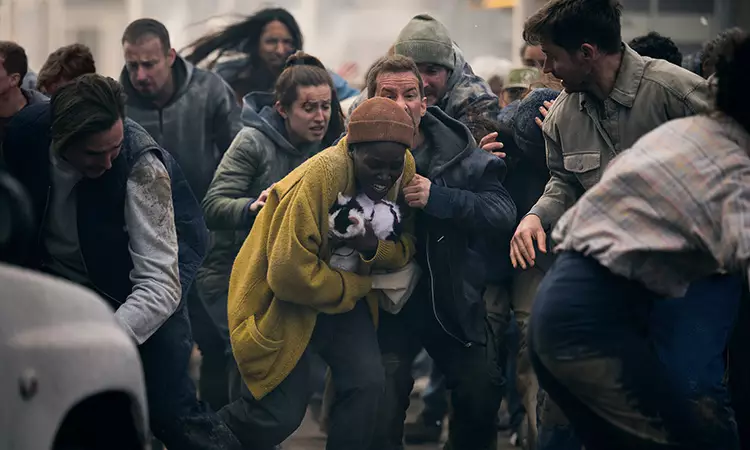A poignant blend of existential dread and tender nostalgia, “A Quiet Place: Day One” invites audiences into the chaotic realm of a city facing an unprecedented threat while centering on the humanity of one woman, Sam. Portrayed by Lupita Nyong’o, Sam exists on the precipice of life and death, her battle with cancer juxtaposing the external chaos of an alien invasion threatening to obliterate civilization as we know it.
From the outset, we are thrust into a world that is familiar yet vastly altered, echoing a typical day in New York that rapidly devolves into survival mode. The film’s approach consciously avoids unnecessary backstories or exposition, trusting audiences to glean the broader implications from prior films in the franchise and the intrinsic nature of storytelling in this universe. Instead, Michael Sarnoski, the director, presents an intimate tableau where personal stories come to the forefront amid a catastrophic backdrop.
This narrative choice illuminates Sam’s desperate struggle for agency in a world spiraling into madness. As she prepares to take a trip to the theater, the irony of her situation is palpable. While her prognosis leaves little room for optimism, and the threat of the aliens looms ominously, her quest takes on the semblance of a farewell tour—a final stab at reclaiming her life amidst the ruins. This quest for New York’s quintessential pizza isn’t mere whimsy; it’s a visceral link to her past, to joy, family, and life encapsulated in the flavors of shared experiences.
Sarnoski deftly intertwines the themes of companionship and nostalgia, juxtaposing searing pain with a yearning for connection. Sam is accompanied by Frodo, her beloved cat, who serves not only as her emotional support but as a symbol of unwavering love. The film navigates through collective memories tied to beloved pets, evoking a sense of comfort in the midst of turmoil—a concept that resonates with viewers’ own relationships with their pets. This bond is reminiscent of Sarnoski’s previous film, “Pig,” which explores the intrinsic bond between man and animal during emotional upheavals.
The introduction of Eric, played by Joseph Quinn, further enriches this exploration of companionship. His character, a law student with a penchant for adventure, becomes an unexpected ally for Sam as they embark on their journey through the dystopian landscape. Their relationship champions the notion that even in dire circumstances, connections can flourish, pushing characters toward self-discovery beyond the looming inevitability of death.
The setting plays a significant role in “A Quiet Place: Day One.” The devastated infrastructure of New York becomes a metaphor for not only the alien threat but also the fragility of life itself. Sarnoski paints a hauntingly beautiful panorama of destruction where those once vibrant streets filled with laughter are now shrouded in chaos. The decision to portray this collapse from a ground-level perspective creates a visceral experience for viewers, heightening the sense of impending doom.
As Sam and Eric traverse through the desolation, their journey embodies a form of rebellion against a fate that seems preordained. Unlike the throngs of people fleeing toward perceived safety, Sam’s decision to venture into the chaos symbolizes an acceptance of mortality. She marches against the current, serving as a poignant commentary on the human spirit—unwilling to surrender to despair even in the face of annihilation.
“A Quiet Place: Day One” encapsulates the essence of an elegy, marking the end of an era while simultaneously igniting a flicker of hope. The film lingers on moments of reflection, allowing viewers to contemplate not just the loss of life, but the richness that comes from embracing our existence fully, even in the face of death. Sam’s journey is not rooted in a desire for survival but rather a profound exploration of what it means to live in the fleeting moments we have left.
By the film’s conclusion, viewers are left not with despair, but with an understanding of resilience within vulnerability. The narrative culminates in an almost transcendent realization: that in confronting the end, we may discover the true essence of what it means to be alive. “A Quiet Place: Day One” serves as a testament to the beauty of existence, intermingled with themes of companionship, loss, and the fragile dance between life and death—a journey worth taking despite the silence that looms ahead.

